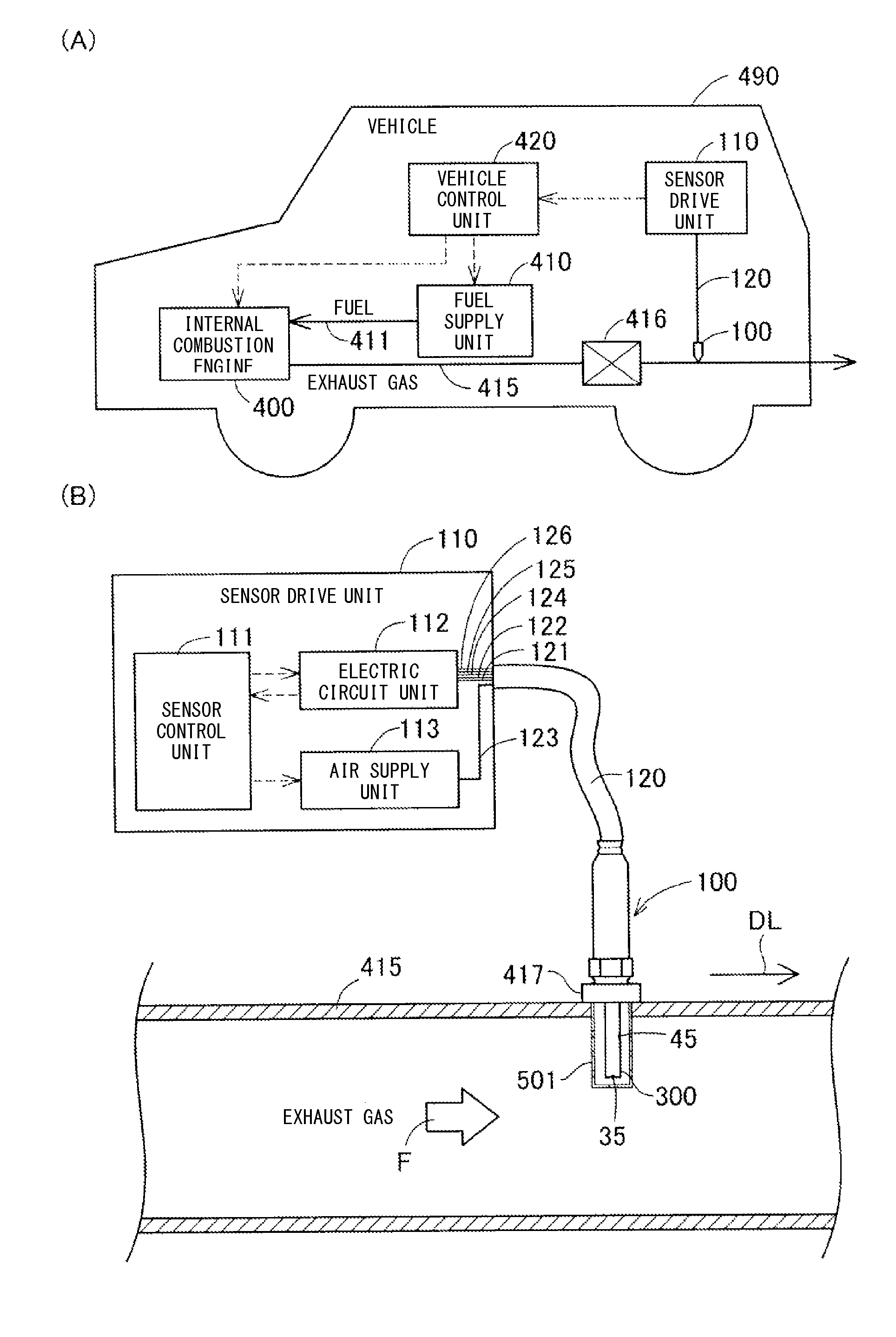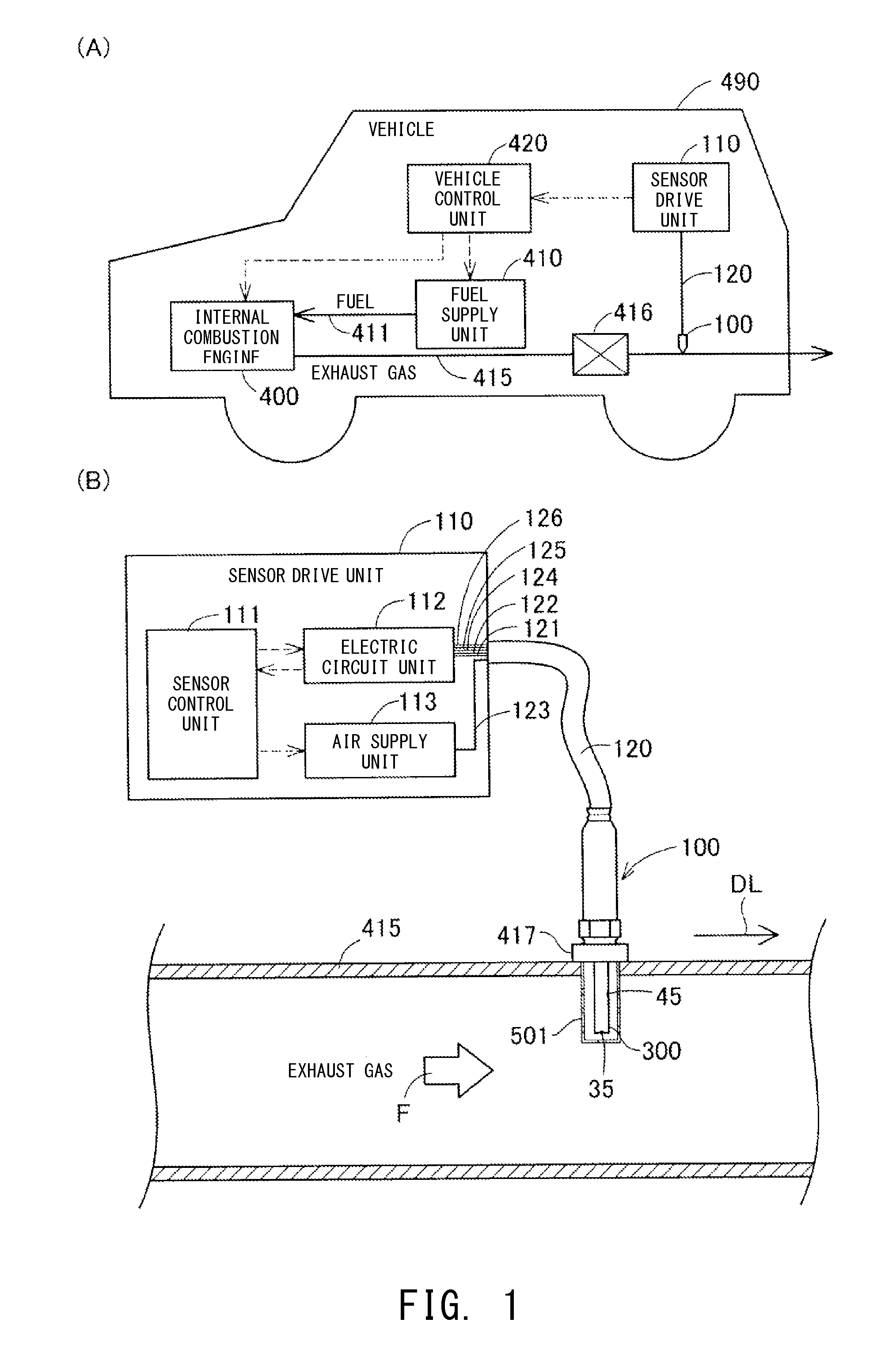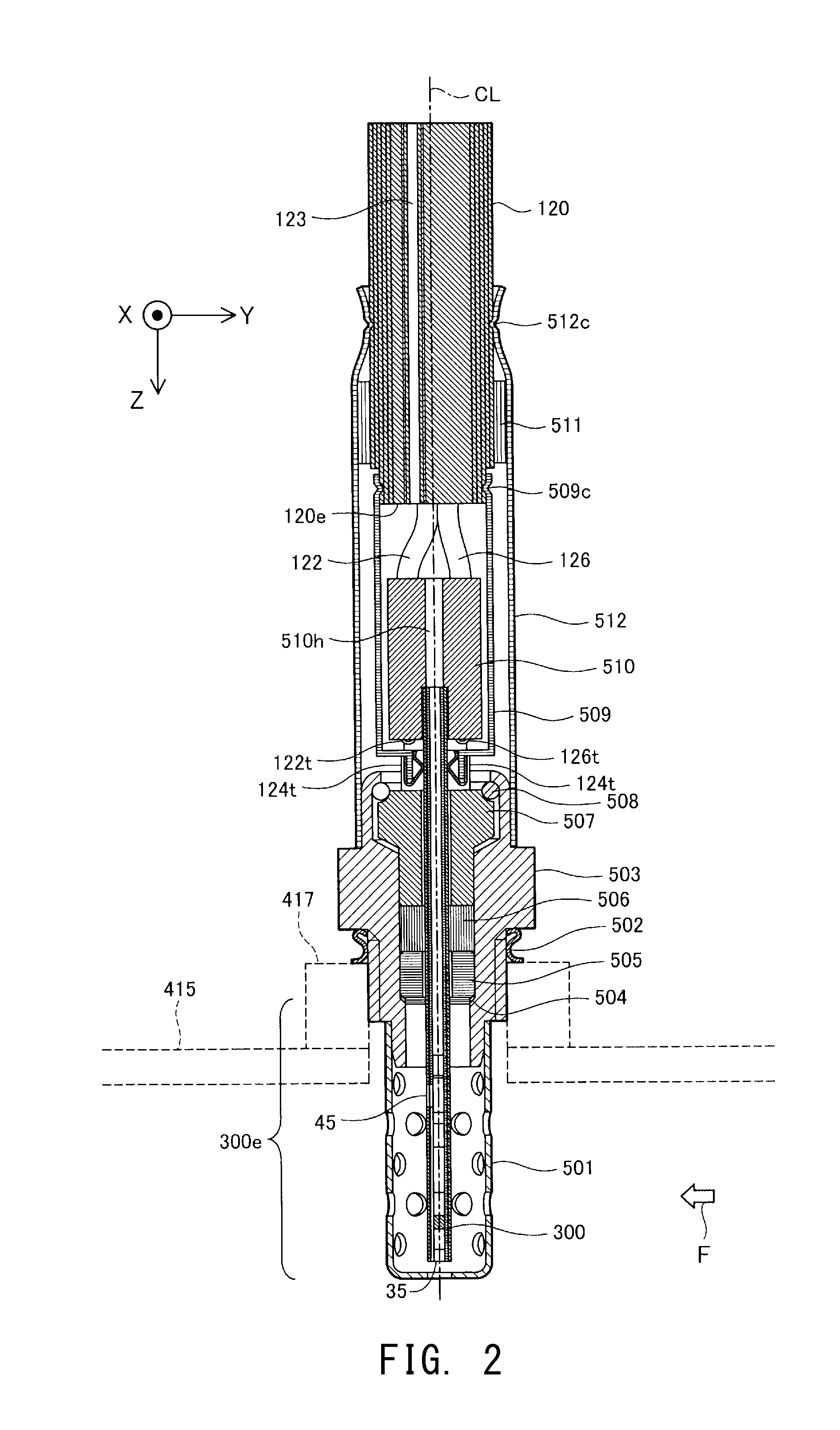Microparticle sensor
a technology of microparticles and sensors, applied in the field of sensors, can solve the problems of particulate sensors failing to accurately detect the amount of particulates in exhaust gas, the electric potential of floating potential sections failing to accurately reflect the amount of ions used for electric charging, and partially exposed electrically conductive members
- Summary
- Abstract
- Description
- Claims
- Application Information
AI Technical Summary
Benefits of technology
Problems solved by technology
Method used
Image
Examples
first embodiment
A. First Embodiment
A1. Configuration of Particulate Sensor:
[0044]FIG. 1 is a set of schematic views showing the configuration of a vehicle equipped with a particulate sensor according to an embodiment of the present invention, and the configuration of a sensor drive unit for controlling the particulate sensor. As shown in FIG. 1(A), a vehicle 490 includes an internal combustion engine 400, a fuel supply unit 410, and a vehicle control unit 420. The internal combustion engine 400 is a power source of the vehicle 490 and can be, for example, a diesel engine.
[0045]The fuel supply unit 410 supplies fuel to the internal combustion engine 400 through a fuel pipe 411. An exhaust gas pipe 415 is connected to the internal combustion engine 400, and exhaust gas from the internal combustion engine 400 is discharged to the exterior of the vehicle 490 through the exhaust gas pipe 415. A filter device 416 (e.g., DPF (Diesel Particulate Filter): diesel particulate collection filter) for removing p...
modification 1
B1.
[0143]In the embodiment described above, air is used for leading the ions PI generated in the ion generation section IG to the electric charge section EC and the capture section CP. However, gas utilized for leading the ions PI to the electric charge section EC and the ion capture section CP can be another gas which does not contain particulates to be detected. Preferably, gas utilized for leading the ions PI to the electric charge section EC and the capture section CP is unlikely to be ionized in an environment where the particulate sensor 100 is used. More preferably, gas utilized for leading the ions PI to the electric charge section EC and the capture section CP is ionized through corona discharge. Furthermore, preferably, the gas exists around the particulate sensor 100 and the sensor drive unit 110 in an environment where the particulate sensor 100 is used.
B2. Modification 2:
[0144]In the embodiment described above, a nozzle is formed at the forward end portion 611n of the c...
modification 5
B5.
[0148]In the embodiment described above, the portion 323 other than the distal end portion 322 of the discharge pattern 320, the portion 327 other than the distal end portion 326 of the trap pattern 325, the first ground pattern 340, the vias 310v of the first ceramic layer 310, and the vias 330v3 of the second ceramic layer 330 are provided in the interior of the structure ST made of insulating ceramic. However, electrically conductive members in regions in noncontact with gas which contains particulates to be detected may be exposed to the exterior of the structure.
B6. Modification 6:
[0149]In the embodiment described above, the vias 310v of the first ceramic layer 310 and the vias 330v of the second ceramic layer 330 are provided along three sides of the rectangular cross section of the structure ST of the sensor unit 300. The first ground pattern 340 forms a plane perpendicular to the vias 310v and 330v in the interior of the rectangular columnar structure ST. In the embodimen...
PUM
| Property | Measurement | Unit |
|---|---|---|
| current | aaaaa | aaaaa |
| electric potential | aaaaa | aaaaa |
| voltage | aaaaa | aaaaa |
Abstract
Description
Claims
Application Information
 Login to View More
Login to View More - R&D
- Intellectual Property
- Life Sciences
- Materials
- Tech Scout
- Unparalleled Data Quality
- Higher Quality Content
- 60% Fewer Hallucinations
Browse by: Latest US Patents, China's latest patents, Technical Efficacy Thesaurus, Application Domain, Technology Topic, Popular Technical Reports.
© 2025 PatSnap. All rights reserved.Legal|Privacy policy|Modern Slavery Act Transparency Statement|Sitemap|About US| Contact US: help@patsnap.com



